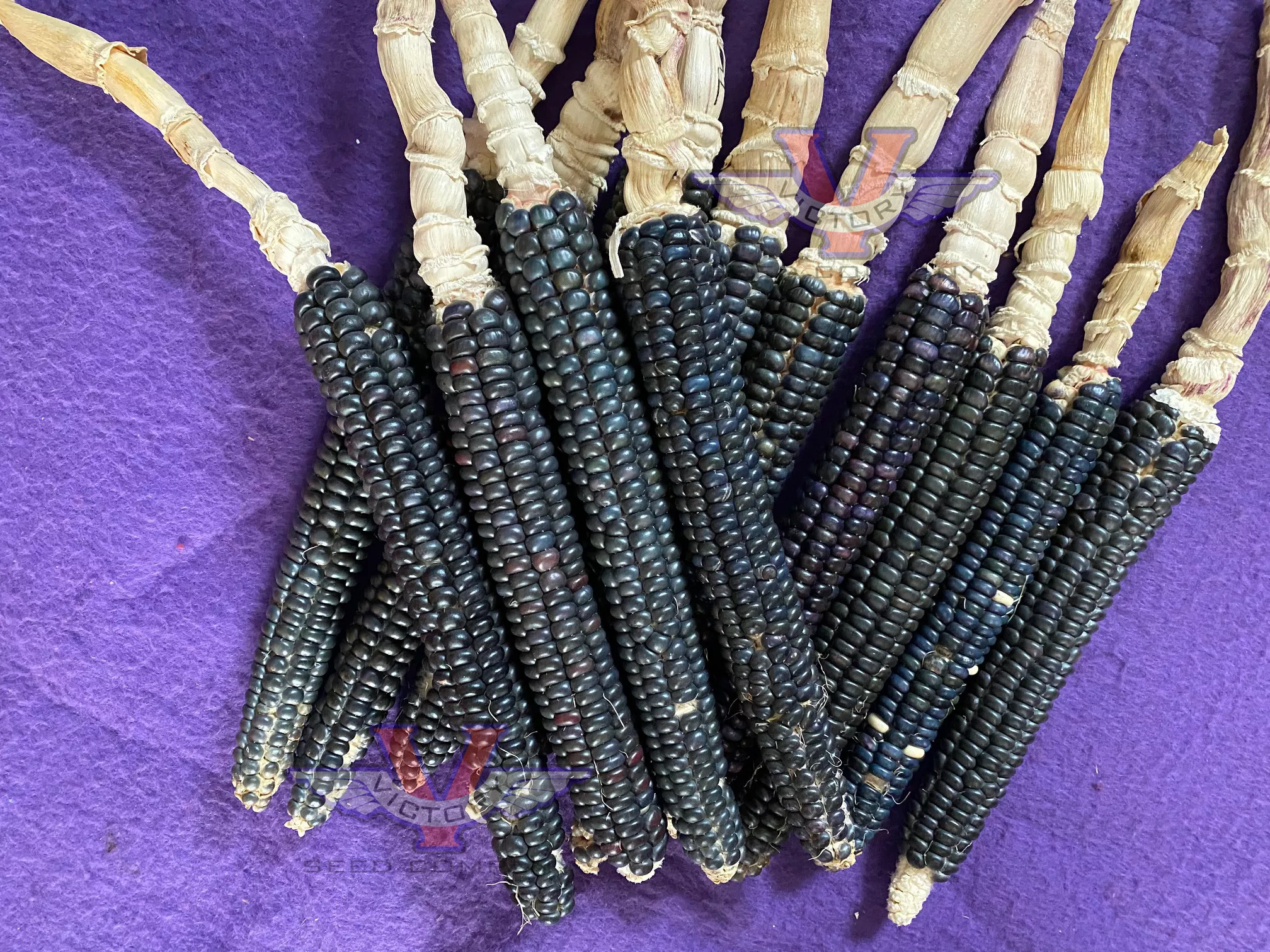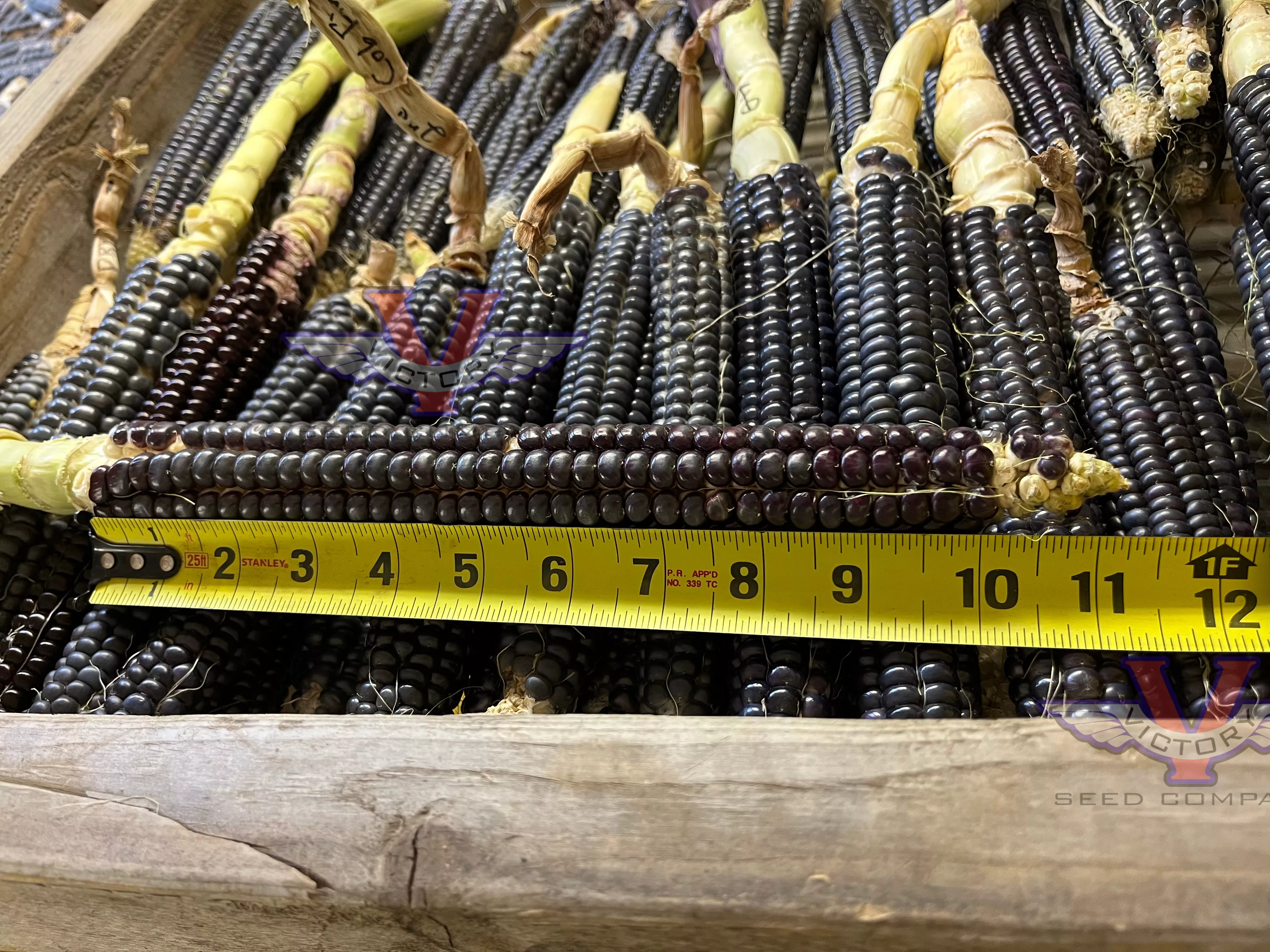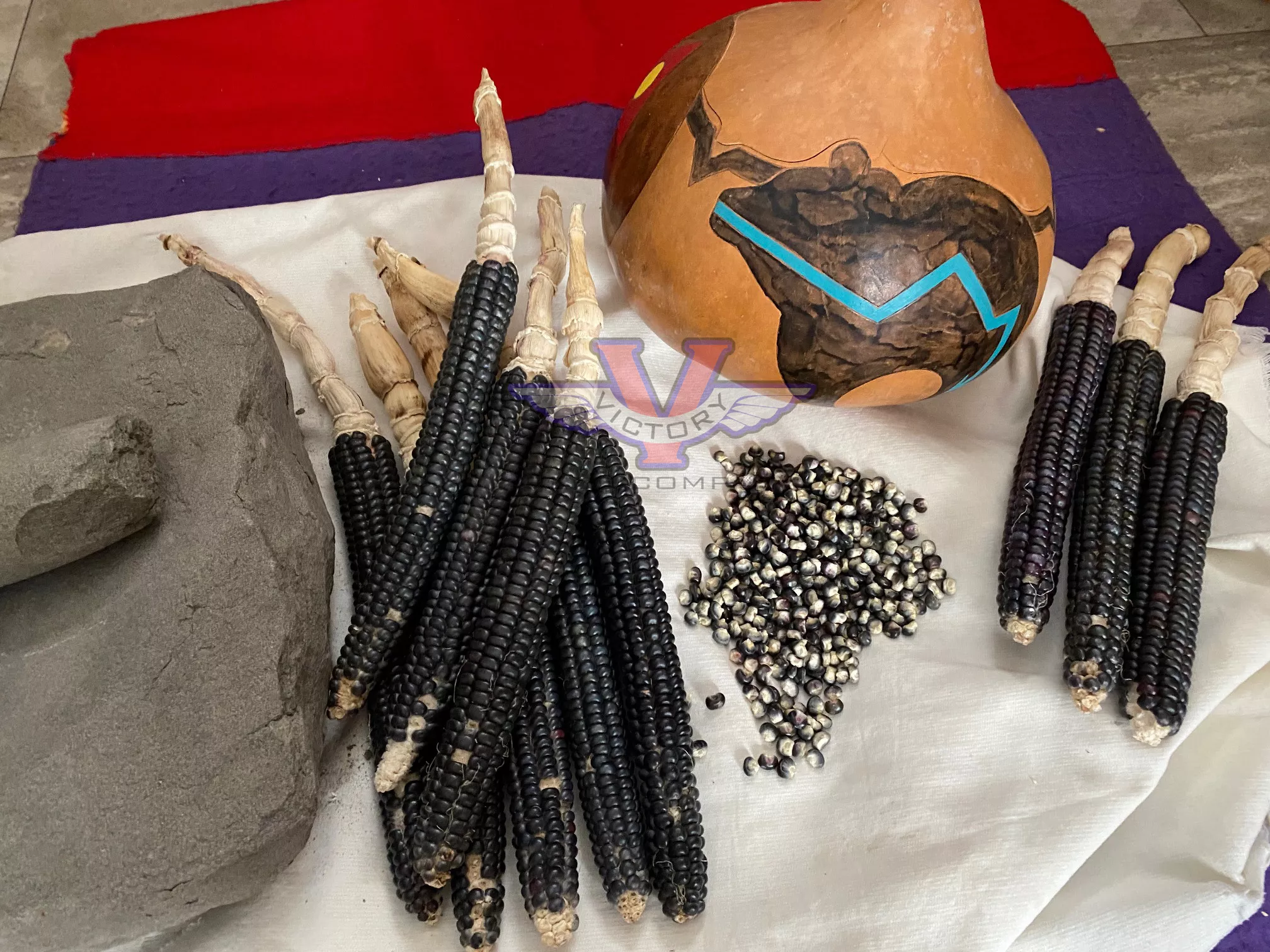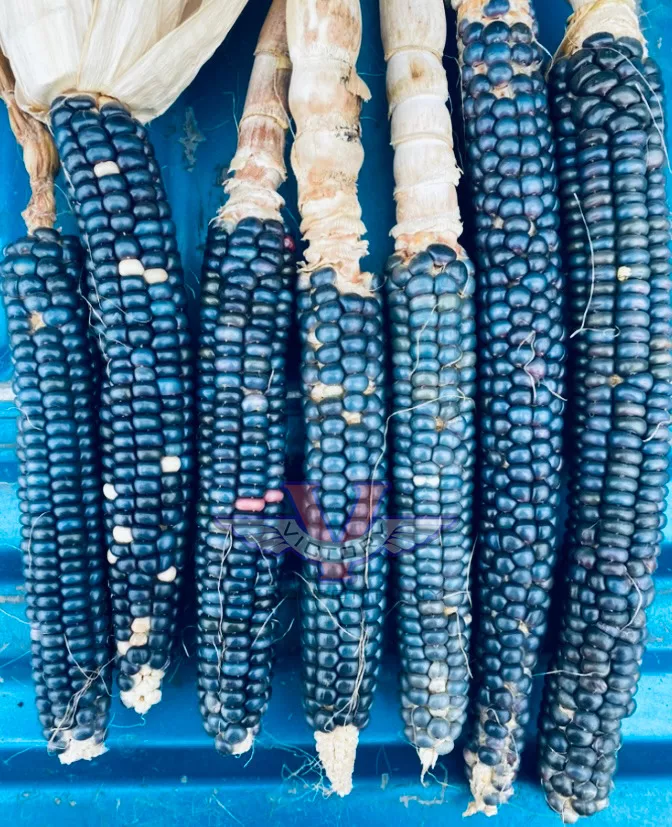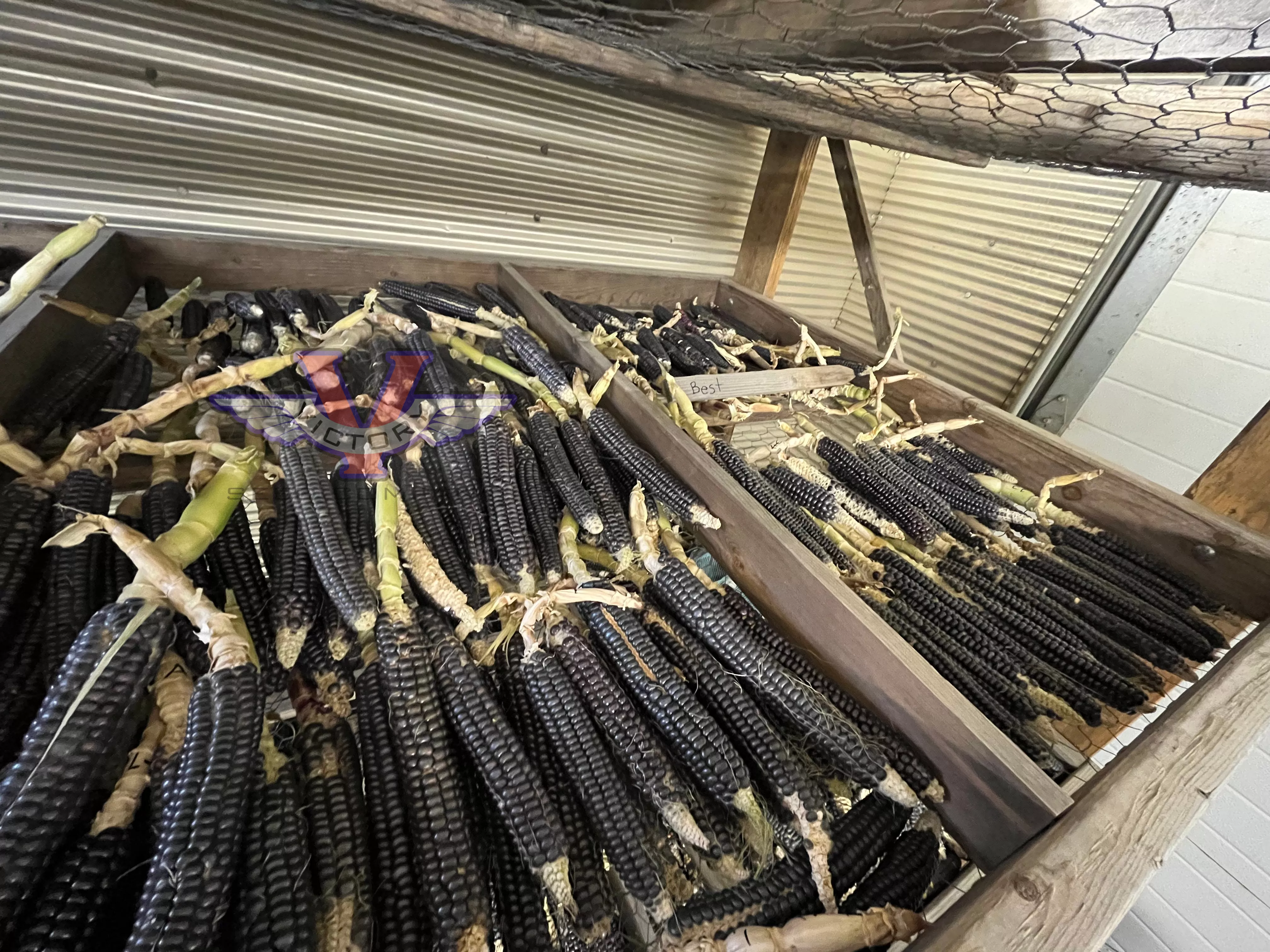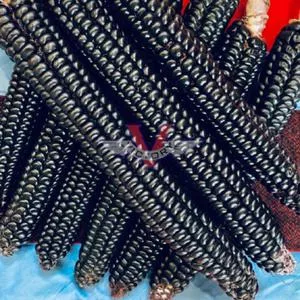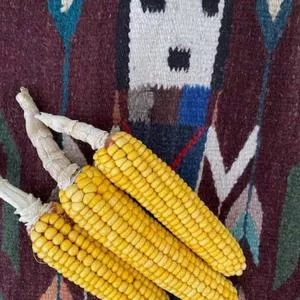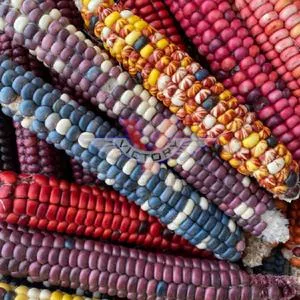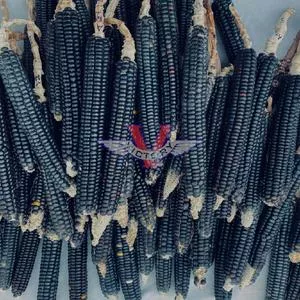




Blue Mesa Maize Flour Corn
Zea mays subsp. mays
Price: $5.17
SKU: 31404741Choose a variant:
This soft flour starch is ideal for blue cornbread, tortillas, etc. It has the same type of soft starch as Painted Mtn, famous for cornbread, and which won first place in a publicized masa and tortilla making trial. Nutrient dense. It has high antioxidant levels because of the predominantly dark blue kernels, and also a significant amount of blue germs, a very rare trait.
This quick growing Native corn endures early cold soil planting as well as blasts of summer heat. It is a Native heirloom composite selected for over 30 years. It's ancestry is 50% from the famous stress-resistant Painted Mountain Corn, and the other 50% is from four ancient concho corns from 8,000' elevation in the Rocky Mountains of the SW desert region. These are the survivors of years of drought in dry land northern Montana, adapted to the escalating climate change. For tomorrow's climate survivors, and people around the world suffering badly from drought.
Plants are 5' tall for us under dryland cultivation. 6-12" long narrow cobs. 8-10 rows of kernels which allows them to dry fast.
This is not a hybrid. It is a genetically diverse open pollinated population. You can plant your own seed and watch it adapt to your location. Excellent nutrition for your food security seed bank.
Dave is trying to give the world several different genetic populations of stress hardy corn so people can see which lineage does best where they live as the planet heats up.
Dry grain in 110 days
Cultivation instructions are the same as for Painted Mtn. Plant early. Survives cold soil. Harvest when husks are dry and kernels are hard.
This quick growing Native corn endures early cold soil planting as well as blasts of summer heat. It is a Native heirloom composite selected for over 30 years. It's ancestry is 50% from the famous stress-resistant Painted Mountain Corn, and the other 50% is from four ancient concho corns from 8,000' elevation in the Rocky Mountains of the SW desert region. These are the survivors of years of drought in dry land northern Montana, adapted to the escalating climate change. For tomorrow's climate survivors, and people around the world suffering badly from drought.
Plants are 5' tall for us under dryland cultivation. 6-12" long narrow cobs. 8-10 rows of kernels which allows them to dry fast.
This is not a hybrid. It is a genetically diverse open pollinated population. You can plant your own seed and watch it adapt to your location. Excellent nutrition for your food security seed bank.
Dave is trying to give the world several different genetic populations of stress hardy corn so people can see which lineage does best where they live as the planet heats up.
Dry grain in 110 days
Cultivation instructions are the same as for Painted Mtn. Plant early. Survives cold soil. Harvest when husks are dry and kernels are hard.
The seed we sell is produced and sold to us by its developer. Since 1970, Dave Christensen of Big Timber, Montana (Seed We Need®) has been continuously developing and refining this amazingly diverse corn variety. He has made it his life's work. We purchase our seed stock directly from Dave so by purchasing these seeds for your own garden, you are not only helping to support the seed variety preservation work of the Victory Seed Company, you are directly supporting another seed preservationist.
Genetic Classification: Open Pollinated
Planting Instructions:
'Blue Mesa' is one of the most cold-hardy corns available for early spring planting. Unlike the common practice of waiting until all danger of frost has passed, it was developed to survive planting in the cold, early spring soil. Developed at a 5,000 foot elevation in the mountains of Montana, it is bred to sit in cold, wet soil emerging with amazing vigor when it warms up.
Dave recommends planting by May 15 in the highest elevation where freezes and frost continue into June. In warmer climates plant it earlier.
If you grow without irrigation, it is good to get the corn growing early so that it is well established before mid-summer heat and drought hits. In Harden, Montana we plant on April 15th and harvest it around August 15th as dry grain.
As far as spacing of plants goes, you can do anything with it that you want. There are many ways you can space it, some better than others, but the instructions can get too complicated. The shorter the season the more space it should be given. I would caution that the plants are short and should not be planted where they will be shaded out by taller plants.
I plant my large, dryland acreage with twelve inches between kernels in rows spaced three feet apart. If you irrigate, you can space them closer together. The most common error people make is planting them too closely.
If planting using the "three to four kernels in a hill" method, make sure there is plenty of space between the hills so the plants get water and sunlight. Hill planting has an advantage for survival because you can carry a bucket of water to them. And understand that the kernels are planted on level ground, or in an indentation to catch rain water, and they are only "hilled-up" later in the growing season to lock in the moisture. Do not plant kernels in a mound or hill at the start; the roots will be on top of the ground level. You want the roots to go deep to get water and to support the plant.
All corn varieties need to be planted in a block so that there are neighbors for pollen on all sides. If you plant in a straight row the wind can blow all the pollen away.
Harvest Information:
Pick the ears for dry grain or decoration when the husks are dry and the kernels are hard enough that you cannot make a dent in them with your fingernail. Many people pick the ears too early when kernels are still soft. If this is done they shrivel up and shrink and their beauty is destroyed. They cannot finish maturing once they have been picked.
Even though the ears look dry, there remains moisture deep within the cob. If you were to enclose them in a box, the moisture would cause them to sour and mold. You may let them dry longer on the plants if neither weather nor predators are damaging them. Otherwise hang them up or lay them out in the open until they are completely dry inside.
Customer Reviews:
Do you have experience with this one? 📝 📣 Write a review!
No reviews have been posted yet.

